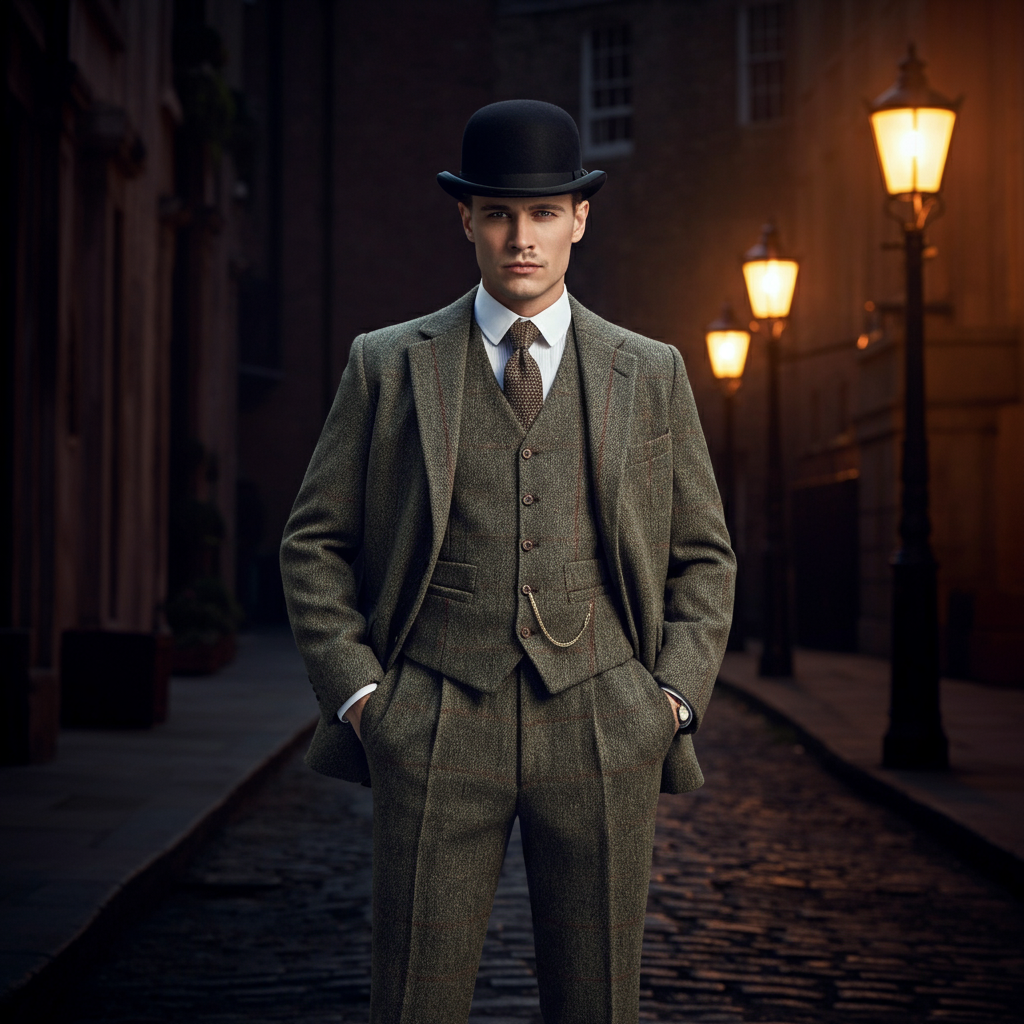
Introduction
A significant year in the history of fashion was 1912. The Edwardian era, which was characterised by lavishness, well-defined shapes, and elaborate details, reached its zenith at this time. Fashion was linked to one of the most memorable events in history when the RMS Titanic set off on its ill-fated maiden voyage that year. From opulent dresses that outlined social classes to well-tailored clothes that embodied sophistication, 1912 fashion provides a wealth of ideas and understanding.
From the Edwardian era’s influence to its current effects, this blog examines the fashion scene of 1912 in great detail. What we’ll discuss is as follows:
- An overview of 1912 fashion trends.
- Influence of the Edwardian period and the Titanic on style.
- Key designers who shaped fashion.
- Popular clothing styles for men, women, and children.
- Accessories and their cultural significance.
- The transition to simpler, more practical styles that led to the 1920s.
- How modern fashion draws inspiration from 1912 fashion trends.
Dive into a world of corsetry, lace, and progressive fashion evolution—here’s everything you need to know about the fashion of 1912.
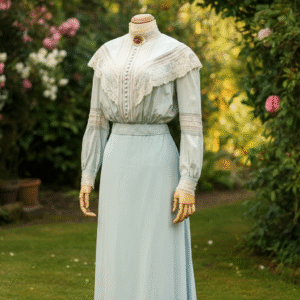
1. Overview of 1912 Fashion Trends
The Edwardian era’s highly structured, ornate clothing gave way to softer, simpler styles that alluded to the Jazz Age of the 1920s during the transitional year of 1912.
Key Features of 1912 Fashion:
- The S-shaped Silhouette: Corsets remained an essential part of a woman’s wardrobe, shaping the body for a prominent bust and arched back.
- Softening Structures: Empire waistlines in eveningwear began to emerge, favoring flowing fabrics over stiff, tightly tailored designs.
- Attention to Detail: Embellishments such as ruffles, lace, and beadwork adorned women’s dresses. This reflected the era’s obsession with intricate craftsmanship.
- Lighter Fabrics: A move toward comfortable materials like silk, chiffon, and tulle replaced heavier fabrics like velvet and satin.
In 1912, women’s responsibilities were changing and social conventions were starting to loosen, which was mirrored in fashion. One thing, however, never changed: fashion was a potent means of status and self-expression.
2. The Edwardian Era and Titanic’s Influence on Fashion
In 1912 fashion , the Edwardian era, generally spanning 1901 to 1914, had a significant impact on fashion. This period, which was named for King Edward VII, was distinguished by opulent beauty, with clothing acting as a clear barometer of social standing.
How the Titanic Embodied Edwardian Elegance
Known as “The Ship of Dreams,” the Titanic was a microcosm of Edwardian culture. First-class passengers were known for their ostentatious attire, with men radiating sophistication in well-tailored three-piece suits and ladies wearing elaborate evening gowns. The tragic Titanic has permanently brought attention to 1912 fashion captivating fashion.
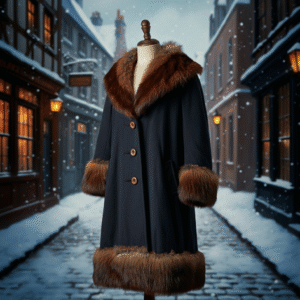
Cultural Movements that Shaped Clothing
- La Belle Époque: Art, culture, and invention were honoured throughout Europe during this time. The romantic styles of Edwardian women’s clothes, which frequently included high collars, puffed sleeves, and trailing skirts, were influenced by Parisian fashion.
- Orientalism: A ballet company located in Paris called the Ballets Russes popularised Asian exotic influences. Eastern fashion’s flowing, colourful, and opulent styles served as a direct inspiration for designers such as Paul Poiret, and this influence permeated more fashionable wardrobes.
3. Key Designers and Their Contributions
Several influential figures became the designers of the styles that laid the foundation for contemporary fashion in 1912, demonstrating that fashion was not just about style but also about invention.
Paul Poiret
- Known For: Simplified, corset-free dresses and Orientalism-inspired designs.
- Revolutionary Contribution: The loose-fitting “hobble skirt,” which was more constrained around the ankles and made mobility difficult, is frequently attributed to Poiret. Despite being controversial, his designs encouraged women to wear more liberated styles by departing from the conventionally regimented silhouette.
Lady Duff Gordon (Lucile)
- Known For: Elegant evening wear and draped tea gowns.
- Revolutionary Contribution: Lady Duff Gordon’s appreciation of feminine and ethereal forms stood in stark contrast to the functionality of earlier styles. Her designs ushered in the era of fashion as a worldwide industry by inspiring more laid-back and contemporary haute couture. Her legacy was further enhanced by the fact that she survived the Titanic.
Jeanne Paquin
- Known For: Elegant but wearable designs for women on the go.
- Revolutionary Contribution: Paquin bridged luxurious eveningwear with practicality, appealing to the growing number of independent, working women.
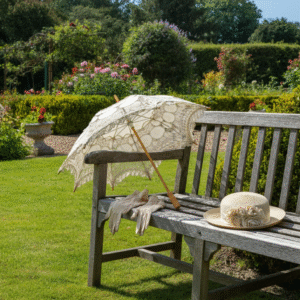
4. Popular Clothing Styles for Men, Women, and Children
Women’s Fashion
Women’s clothing in 1912 fashion walked a fine line between maintaining Edwardian opulence and inching towards modernism.
- Morning and Afternoon Dresses: High-neck blouses paired with long skirts signified daytime wear. Lightweight cotton and pastel shades made for understated elegance.
- Tea Gowns: A transitional garment, tea gowns were loose-fitting and corset-free—a form of semi-formal leisure clothing favored for socializing at home.
- Evening Gowns: Floor-length gowns with empire waistlines defined eveningwear. These dresses often incorporated luxurious fabrics and embellishments like beading and lace detailing.
Men’s Fashion
1912 fashion was an era of refinement for menswear, characterized by strict tailoring and attention to detail.
- Daywear: Morning suits, featuring a slightly longer jacket paired with trousers, were popular for formal day events.
- Lounge Suits: Three-piece suits, often crafted from tweed or wool, served as the go-to outfit for less formal occasions.
- Outerwear: Coats such as the Chesterfield were staples in a man’s wardrobe, adding layers of sophistication.
- Evening Attire: Tuxedos with winged-collar shirts were the standard at formal dinner gatherings.
Children’s Clothing
- Girls: Sailor dresses and pinafores were worn for practicality and aesthetics, featuring clean lines and basic color palettes.
- Boys: Little boys often wore knee-length shorts and matching jackets, resembling miniature versions of adult menswear.
5. Accessories and Their Cultural Significance
In 1912 fashion, accessories were essential for both practical and decorative reasons. Wearing clothing from head to toe demonstrated achievement and attention to detail.
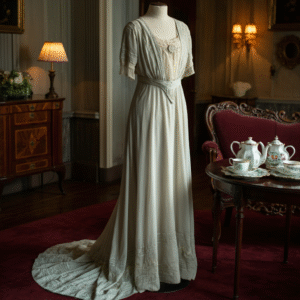
Women’s Accessories
- Hats: Edwardian hats could be wide-brimmed and decked with feathers, flowers, or ribbons.
- Gloves: Worn at all times to maintain social propriety, gloves were often made of silk or cotton.
- Parasols: Used to protect porcelain skin from the sun, parasols also doubled as stylish accessories.
- Jewelry: Pearls, brooches, and strings of beaded necklaces were common in accessorizing eveningwear.
Men’s Accessories
- Pocket Watches: A functional and stylish statement of wealth.
- Hats: Bowler hats and fedoras were the most common for men of higher social standing.
- Walking Sticks: A symbol of prestige, they often featured intricate designs and materials like ivory.
6. Transition to Simpler Styles Leading to the 1920s
Although 1912 saw a lot of rigid forms and fine details, it also set the stage for significant changes by the conclusion of the decade. The 1914–1918 First World War hastened these developments.
Why Simpler Styles Emerged:
- Practical Needs: The war placed emphasis on functionality rather than extravagance.
- New Fabrics: Materials like jersey, popularized by Coco Chanel, became staples as they allowed greater movement.
- Changing Roles: Women entered the workforce, and their clothing had to reflect comfort and practicality.
By 1920, shorter hemlines, looser fits, and androgynous designs ushered in the Roaring Twenties.
7. How Modern Fashion Draws Inspiration from 1912
Fashion is cyclical, and echoes of 1912 can be seen even today.
- Runway Revival: Designers like Alexander McQueen and Dior frequently draw inspiration from Edwardian silhouettes.
- Everyday Wear: High-collared blouses, tea dresses, and even cape-style coats—popular in 1912 fashion—remain timeless wardrobe staples.
- Sustainability: 1912’s painstaking workmanship and emphasis on quality are in line with contemporary environmental movements. Pieces with a vintage feel are prized for their timeless appeal.
Incorporating 1912-Inspired Looks Today
To channel the elegance of 1912 fashion in your wardrobe:
- Opt for structured but feminine dresses featuring lace or embroidery.
- Accessorize with dainty gloves, pendants, or a chic hat.
- Choose earth tones or jewel-toned fabrics for sophistication.
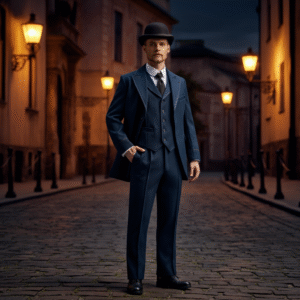
Final Thoughts
The world was enthralled by 1912 fashion because of its exquisite structure, cultural inspirations, and opulent workmanship. Even though it captures a particular period of history, its elegance, skill, and usefulness still serve as inspiration for the fashion industry today. The elegance of 1912 endures, whether you’re looking back for inspiration or just admiring its legacy. Start your fashion time-travel with items that are influenced by this remarkable era if you’re prepared to add vintage charm to your wardrobe.





Leave a Reply